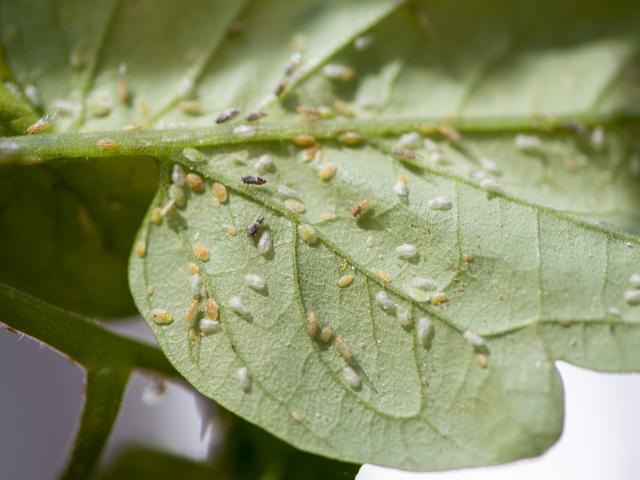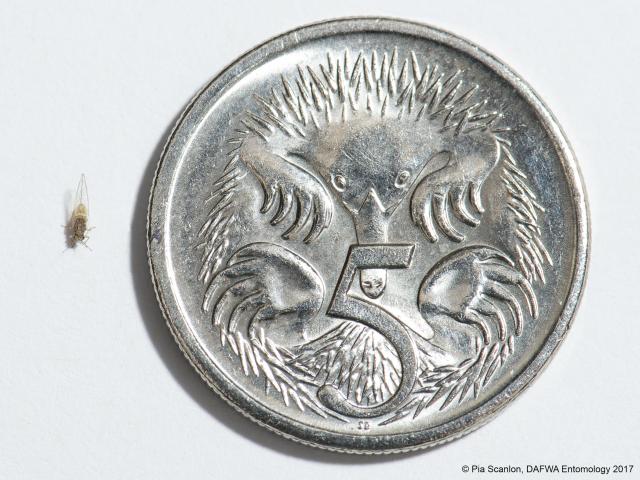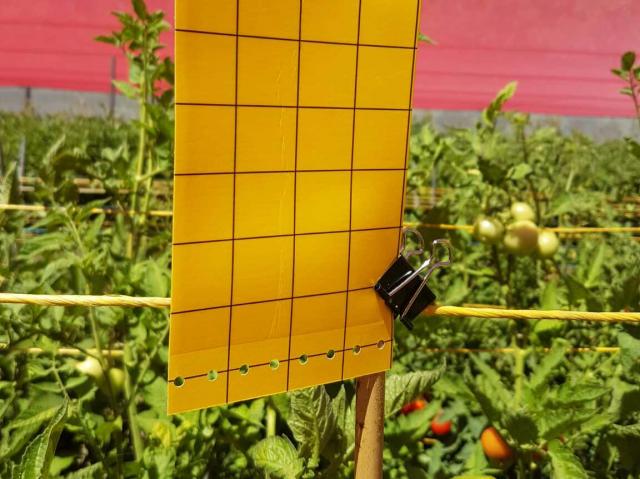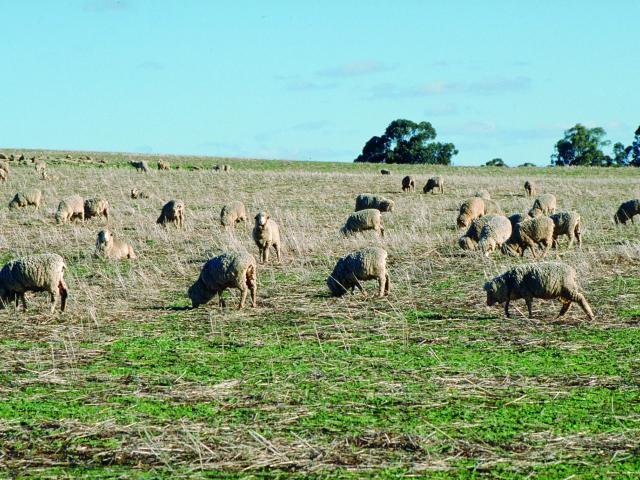Biosecurity alert: new emergency plant pest detected in Western Australia
The Department of Agriculture and Food, Western Australia (DAFWA) is working with the WA horticulture industry to respond to the detection of tomato potato psyllid (Bactericera cockerelli), an exotic plant pest.
This is the first time the psyllid has been detected in Australia.
Tomato potato psyllid attacks a range of plants including potato, tomato, eggplant, capsicum, chilli, tamarillo, cape gooseberry, goji berry, and sweet potato.
The weeds nightshade, groundcherry, African boxthorn, kangaroo apple and field bindweed are also hosts of the pest.
The tomato potato psyllid poses a significant threat to production and can impact market access.
To date, the psyllid has been confirmed on more than 50 properties across the Perth metropolitan area including commercial and residential properties, and retail outlets, and on a small number of properties in regional areas including Busselton, Margaret River, Yarloop and Balingup
A Quarantine Area Notice is in place for the Perth metropolitan area, as well as the shires of Murray, Chittering and Gingin, to help prevent the spread of tomato potato psyllid to other parts of the state.
Vegetable growers – check and report, even if you don’t find anything
Commercial vegetable producers and residential growers in regional areas are urged to check for signs of the tomato potato psyllid and report via MyPestGuide Reporter app, email or phone.
The free MyPestGuide Reporter app is available from the Google Play or the App Store.Alternatively, you can email photos with your name, address and mobile number to info@agric.wa.gov.au, or call the Pest and Disease Information Service on 1800 084 881.
It’s important to report even if you don’t find any signs of the psyllid. These reports are essential to help determine the spread of the pest.
About the tomato potato psyllid and what to look for
The tomato potato psyllid is a tiny sap-sucking insect with three stages of development – egg, nymph and adult. Adults and nymphs of tomato potato psyllid cause injury to plants by feeding with sucking mouth parts.
Look for the insect in all its life stages on the underside of leaves.
Signs of tomato potato psyllid include:
- Insects jumping from the foliage when disturbed.
- White sugar-like granules which coat the plant leaves and stems, and can lead to the development of sooty mould.
- Yellowing of leaf margins and upward curling of the leaves.
- Severe wilting of plants caused by high numbers of psyllids feeding.
- Shortening of stem internodes.
- Stem death similar to other potato and tomato disorders.
Response activities
The department is progressing with targeted surveillance in regional areas as a priority.
Department officers have inspected more than 450 properties, and installed almost 3000 ‘sticky traps’ across the state since surveillance activities commenced.
Grower information sessions continue to be held in conjunction with VegetablesWA, Potato Growers Association of WA and AUSVEG.
A Quarantine Area Notice is in place for the Perth metropolitan area, as well as the shires of Murray, Chittering and Gingin, to help prevent the spread of tomato potato psyllid to other parts of the state. More information about the Quarantine Area Notice is available from www.agric.wa.gov.au
Industry Updates are being provided as new information becomes available. The most recent Industry Update is available at www.agric.wa.au/tpp
Biosecurity reminder for growers
Practice sound crop hygiene/biosecurity practices to prevent the entry, establishment and spread of pests and diseases.
Proper signage to restrict entry, routine surveillance for pests, on-farm clean down facilities, and action plan and checklist are all part of a farm biosecurity regime.
Management of any host weeds such as nightshade, groundcherry, matrimony vine, and field bindweed should also be considered.
More information on biosecurity is available at the Farm Biosecurity website www.farmbiosecurity.com.au
Additional resources include the AUSVEG Farm Biosecurity Plan, http://ausveg.com.au/biosecurity/Biosecurity%20R.pdf
Further information
More information, including how to look for and report the pest, Industry Updates and details on the Quarantine Area Notice, is available on the department’s website at www.agric.wa.gov.au/tpp
Tomato potato psyllid is an emergency plant pest and the department is working with industry as a priority to minimise the impact of this pest incursion.
Industry contacts for growers
VegetablesWA
Phone: 08 9481 0834
Email: office@vegetableswa.com.au
Potato Growers Association of WA
Phone: (08) 9481 0834
Email: potatoes@vegetableswa.com.au
Nursery and Garden Industry Western Australia
Matthew Lunn, Chief Executive Officer
Phone: 0410 714 207
Email: matthew@ngiwa.com.au
Department of Agriculture and Food, WA
Rohan Prince, Industry Liaison
Phone: 0429 680 069
Email: rohan.prince@agric.wa.gov.au
Pest and Disease Information Service
Phone: 1800 084 881
Email: info@agric.wa.gov.au
Give your autumn drench now
In normal summer with hot and dry weather the vast majority of scour worm eggs in sheep faeces die quickly, and never reach the larval stage that can infect sheep.
Normally, ‘scour worms’ (i.e. other than Barber’s pole worm) are not a significant risk during summer, provided weaned lambs and hoggets were given an effective drench (i.e. drench with greater than 98% efficacy) last December.
Adult ewes in good body condition can tolerate small worm burdens, so can be left undrenched until late March or early April (“autumn drenching”).
This scenario has now changed with the widespread heavy rainfall during February in many agricultural districts.
However, if hot, dry conditions have subsequently occurred on your property there is no change to this advice.
The longer green pasture and mild temperatures remain, the higher the rate of survival of worm larvae in faeces being deposited on the ground now.
Consequently, the winter worm population will start from a higher base in the coming early winter period.
A short period of germinating pasture does not immediately cause an increase in scour worms in sheep. However, if ewes had not been drenched before summer then it is recommended to drench all your sheep now.
One way to assess the situation particularly if ewes were given a summer drench is to get a worm egg count done.
Using an effective ‘autumn’ drench (i.e. drench with greater than 98% efficacy) is essential otherwise future winter worm problems will be costly.
Re-check your ewes four weeks before the commencement of lambing by getting a worm egg count done.
Ineffective worm control now in your ewes will lead to reduced growth rates in your lambs this coming winter.
If Barber’s Pole worm is present in your flock and green pastures persist or sheep graze perennial pastures then an outbreak may occur within 5 weeks post rainfall.
However, it is difficult to predict whether Barber’s Pole worm will be a problem even in high risk coastal areas without getting a worm egg count.
Making use of tools like worm egg counts (taken at the right time), getting timely advice from consultants with knowledge of worm control or seeking information from “Worm Boss” will be good investments this year.
For more information contact Danny Roberts, Veterinary Officer, Albany +61 (0)8 9892 8535.
Producers reminded to check sheep for flystrike after recent rains
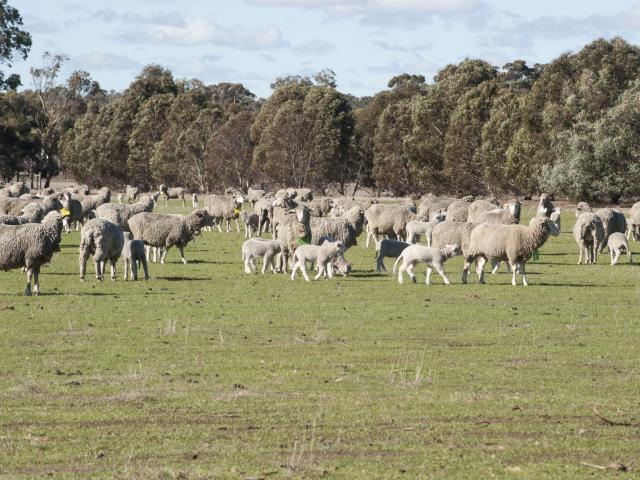
The Department of Agriculture and Food, Western Australia (DAFWA) is warning producers of the need to be aware of an unseasonal risk of flystrike over the coming weeks.
This is as a result of the heavy rainfall received throughout Western Australia in February.
Flystrike is usually a spring problem, which producers are used to managing, however much of the state’s sheep flock is now at increased risk of strike.
The recent heavy rains, followed by a return to warm weather have created perfect conditions for flystrike.
Predicting a producer’s risk of flystrike will depend on environmental conditions as well as how susceptible their sheep are.
The most susceptible sheep are highly wrinkled Merinos and flocks which have long wool and are uncrutched/unshorn over high risk times.
Crutching is usually a spring activity so many flocks will be at increased risk at the moment.
We also expect to see an uptick in fleece conditions such as fleece rot and dermo due to sheep being wet for prolonged periods.
These conditions make sheep more susceptible to flystrike.
Flystrike is a significant welfare issue:sheep at risk should be checked daily and strategic treatments such as crutching and strategic chemical controls used to manage the risk.
The key signs to look for include sheep that are on their own, possibly not grazing; dark stains on the wool, especially on the shoulders, back or crutch; tail twitching, rubbing or chewing at the affected part; and an offensive odour when close to the sheep.
When treating individual affected sheep, first clip all the wool from the affected area and extend the clipped area five centimetres or so into surrounding unaffected wool.
Do not rely solely on applying an insecticide powder or liquid without first clipping away the wool.
If you plan to use chemical treatments make sure they are registered for flystrike use.
Follow label directions and observe withholding periods for wool and meat as well as the export slaughter interval in order to avoid unacceptable residues.
A flystrike chemical planner is also available, in both a paper version and as an app for IPad or IPhone.
This will help to ensure that correct treatments are applied and withholding periods are observed.
A flystrike chemical planner is also available, in both a paper version and as an app for IPad or IPhone. This will help to ensure that correct treatments are applied and withholding periods are observed. For more see the Flystrike Management Tools webpage.
For more information on flystrike control in sheep and lambs see DAFWA’s Managing Flystrike in sheep webpage.
For more information contact Anna Erickson, Veterinary Officer, Narrogin on +61 (0)8 9881 0211.
Food for thought at global food trend seminars

International food and beverage commentator Professor David Hughes provided plenty of food for thought when he spoke about Global Food Trends in Manjimup and Mandurah on 8-9 March.
The department’s Food Industry Innovation project was pleased to host both seminars, in partnership with Peel Development Commission for the Mandurah event.
London-based Professor Hughes, or ‘Dr Food’ as he is known by his blog followers, spoke about global food industry trends, food packaging, production and consumer trends.
Attendees heard timely, relevant insights about the international food landscape including consumers’ growing interest in the supply chain and the source of ingredients.
“Consumers don’t want any ingredients you can’t pronounce,” Professor Hughes said. “There is global demand for food products with few, simple, natural ingredients which is a big positive for farmers.” He said consumers wanted shorter, transparent supply chains with provenance and interesting stories about the producers.
He also highlighted the importance of understanding export markets. Whereas chicken breast meat is highly desirable for many Australian consumers, chicken breast is not favoured in many Asian markets and is actually exported for use in cat food. In Asian markets, there is strong preference for other parts of the chicken for food.
According to Professor Hughes, traditional meat companies have to define ‘protein’ much wider. He used examples of a pea protein cheeseburger, Quorn brand non-meat sausages, TerraVia’s algal protein and Mars and Snickers ‘protein’ bars. Even insects like crickets and maggots are being farmed for protein for intensive feeding of livestock.
Professor Hughes said there were huge opportunities for growth in Western Australia, but also huge challenges in terms of accessing international markets and being competitive and profitable.
He said there was growth in global demand for plant-based protein such as pulses, lentils and pea protein, as well as specialty food ingredients like high fibre, Omega-3 canola, low gluten or gluten free.
“There needs to be a collective vision for these opportunities to become a reality in WA – an environment where there are food clusters and people work together collaboratively and share their knowledge,” he said.
The Mandurah event also featured guest speaker Associate Professor Christopher Vas from Murdoch University’s Singapore Centre for Research in Innovation, Productivity and Technology who spoke on agrifood security trends and the growth of Smart Urban Farms such as vertical farms and plant factories.

“WA needs to invest in technology if we want to be competitive,” Associate Professor Vas said. “The value-add has to start happening. Opportunities are there and we need to take advantage of it. Urban farms will only add more support systems to traditional farming.”
The Food Industry Innovation project is made possible by Royalties for Regions investment.
International competitiveness a focus of State Horticulture Update
Western Australia’s horticulture industries will have access to timely market information, grower case studies and industry research at the first State Horticulture Update.
The inaugural event, hosted by the Department of Agriculture and Food, will focus on strategies and information to assist WA horticulture businesses to become internationally competitive.
Department Irrigated Agriculture executive director John Ruprecht said Western Australia was in a strong position to capitalise on increasing global demand for premium food, and the forum would explore new market opportunities for local horticultural businesses.
“WA has a strong and vibrant horticulture industry,” he said. “In the past 12 months, vegetable exports increased by 17 per cent and fruit exports increased by 23 per cent.
“The department is helping equip growers with the information they need to take the next step to increase international supply, and support them on their journey.
“In order to assist the fruit and vegetable industries to double their value by 2025, we need to work together and explore every opportunity to grow.”
The Update will feature a presentation from Tim Morris, director of consultancy Coriolis, on a report commissioned by the department titled, ‘Pathways to competitiveness’.
The report identifies the opportunities, constraints and drivers for growth and investment that have characterised the international competitiveness of successful businesses.
Mr Ruprecht said the report also provided some interesting lessons from peer regions that have transformed relevant industry sectors over a relatively short time period.
“Agrifood growth in Peru, the dairy industry in New Mexico and pork industry growth in Chile all provide strong examples of transformation and global competitiveness,” Mr Ruprecht said.
“The Coriolis report will be particularly interesting to members of WA’s potato and citrus industries, which have been assessed and benchmarked against peer regions that are achieving international competitiveness.
“Coriolis will provide key insights for industries to achieve more viable international pathways.”
The Pathways to Competitiveness report is a key part of the Agricultural Sciences Research and Development Fund to generate growth and productivity improvements for the Western Australian economy.
Other features of the Update include a presentation on the development of the marketing campaign for BravoTM apple, and insights by local business leaders on business growth, export approach, and the challenges of taking your business to the next stage.
Panel discussions will cover topics including barriers to export growth, biosecurity and market access and department plant biosecurity director Dr Shashi Sharma will provide a strategic update on the response to the discovery of tomato potato psyllid in Western Australia.
The Update will conclude with a networking event sponsored by vegetablesWA.
The State Horticulture Update will be held on Thursday, 6 April at Crown Perth, Burswood.
For more information and to register for the Update, visit the department website at agric.wa.gov.au.
Grape Biosecurity: planning for the future

Western Australian grape growers and producers have a new plan dedicated to their biosecurity needs.
The Western Australian Viticulture Industry Biosecurity Plan focuses on Biosecurity planning and how to react to exotic pest detections in the Western Australian grape industry.
While it is time consuming to plan for pests that may never arrive on our shores, recent biosecurity incidents such as Cucumber green mottle mosaic virus and Tomato potato psyllid have shown the risk is real.
The WA viticulture industry is currently in a beneficial position of being free of a range of grape pests that affect growers in other states of Australia. While procedures are in place to reduce the likelihood, a pest outbreak could have serious, long term consequences for the industry.
To help WA growers maintain area freedom of certain exotic pest, the plan has identified over 250 pests that have not yet established in Western Australian vineyards.
These potential pest threats are categorised based on their establishment and spread potential, economic impact, and a final industry rating of concern. This will provide both the industries and supporting organisations, including Government, with data on what exotic organisms to focus on, and assist in decision making about what steps should be taken should an incursion occur.
This list of pests has been reviewed and ranked according to the likely impact they may have on the WA viticulture industries. The review identified 7 high priority pest threats and a further 39 priority pest threats.
Early detection and surveillance of grape pests is also supported in both the plan and the MyPestGuide Grapes app – a pest surveillance tool that supports the community to identify and report unusual pests to the department.

The next step (due for completion by the end of June 2017) is to develop a pest profile on each of the high priority and priority pests. The pest profiles will provide detailed identification and damage information along with possible management options.
For more details and a copy of the plan, visit ‘Western Australian Viticulture Industry Biosecurity Plan’ on the DAFWA website.
The Western Australian Viticulture Industry Biosecurity Plan and the MyPestGuide Grapes app have been developed as part of the Boosting Biosecurity Defences project, funded by Royalties for Regions.
For more information about this project or to download the MyPestGuide grapes app, visit e-Surveillance for pests and diseases in the WA grape industry webpage.
Research open day for sheep producers

Using the latest research and technology to help sheep producers streamline and grow their business is the focus of a producer workshop in Katanning next month.
The Department of Agriculture and Food is hosting a Sheep Industry Research Open Day ‘Bewety and the Feast’ on 30 March from 9.30am-5pm at its Katanning Research Facility on Nyabing Road.
The event features industry experts discussing how research and technology can be used to make sheep farming easier and more dynamic, and can lead to increased lamb and sheep turn off.
Department sheep industry development director Bruce Mullan said it was an exciting time to be in the sheep industry with high prices for both sheep meat and wool supporting renewed interest and opportunities.
The day will showcase the latest innovative developments across the industry that can improve labour efficiency, sheep traceability and breeding.
Presentations from department staff will include:
- ‘EweTube; Let Siri do the sheepwork!’ from Beth Paganoni; and
- ‘Labour or Love? Labour saving technologies that allow a life off farm’ from John Paul Collins.
Industry experts will cover a number of exciting research areas including:
- ‘Chaos on the Maternity Ward: Can optimising lambing density to minimise mismothering improve lamb survival?’ from Amy Lockwood of Murdoch University; and
- ‘Do I look fat in these genes?! Shedding some light on why owning skinny genes doesn’t guarantee their fit’ with Sarah Blumer of Murdoch University.
There will also be a demonstration on how the cut of meat and cooking can affect eating quality.
For further information or to register for the event, visit the department’s website or email Julia Smith, Research Officer, Albany.
The Sheep Industry Research Open Day is made possible by the department’s Sheep Industry Business Innovation project and in partnership with the Sheep Alliance of WA.
Jujube industry ripe for growth

Nutrient testing of Western Australian jujube orchards has been completed as part of a broader program to grow the industry.
Seasonal local supplies of the popular local delicacy are available now until April.
Department of Agriculture and Food (DAFWA) development officer Rachelle Johnstone said the jujube looked like a small apple, with a thin, dark red skin surrounding a sweet, white flesh.
The department has been supporting development of the jujube industry since 2009, with funding from the national Rural Industries Research and Development Corporation (RIRDC).
During that period, the industry has grown from a few small growers to a cohesive industry with a plan for growth.
In WA, there are currently about 40 growers producing fruit from an estimated 12,500 trees.
About half of WA’s jujube orchards have undergone leaf analysis this season.
Last year growers took part in the Perth NRM Healthy Soils Healthy Rivers program which involved independent agronomist Neil Lantzke, taking soil, leaf and water samples to help the industry benchmark growing practices and fine tune optimal production input management.
This year DAFWA supported follow on testing as part of the RIRDC project.
As jujubes are a relatively new crop in Australia, there is limited information on nutrient requirements.
The aim of nutrient testing is to produce some general leaf analysis standards for jujubes to help growers with their fertiliser management.
Locally-grown Chinese jujubes are sold at local markets and some Asian supermarkets in Perth.
Jujubes are grown in Manjimup, Bridgetown, Donnybrook and Coolup in the South West; Gidgegannup in the Perth Hills; Esperance and Denmark on the South Coast, Geraldton and Cue in the Mid-West and York, Boddington, Kukerin, Bindoon and Beverley in the Wheatbelt region.
WA Jujube Growers Association President Keith Doswell said although growers suffered from late frosts in 2016, the industry was well positioned to supply the local and some regional markets commencing February through to April.
Mr Doswell said the growth of the industry had been due to the association members and assistance from DAFWA and RIRDC, with the main objective for the association during the next 12 months to educate the consumer on the versatility of the fruit both fresh and dried.
The association now has a Facebook page, so you can keep up to date by searching ‘WA Jujube Growers Association’.
More information is available from the Jujubes in Western Australia webpage.
For more information contact Rachelle Johnstone, Development Officer, Bunbury, on +61 (0)8 9780 6158.
Field walk provides glimpse of wine varieties for the future

Wine grape varieties being evaluated as future prospects to meet changing climatic conditions and consumer trends were inspected by 18 Western Australian producers who attended a field walk in January at the WA College of Agriculture, Harvey.
The field walk provided the wine industry with an opportunity to view 22 alternative varieties being evaluated as part of research led by the Department of Agriculture and Food.
The project, funded by Wine Australia, is being carried out in partnership with the Western Australian Vine Improvement Association and WA College of Agriculture - Harvey.
Department lead researcher Richard Fennessy said approximately 80 per cent of Western Australia’s wine grape production comprised of five ‘noble’ French varietals; Sauvignon Blanc, Cabernet Sauvignon, Chardonnay, Shiraz and Semillon.
Reliance on a small collection of varietals to sustain the profitability of the WA wine industry while considering challenges such as climate change and market trends for example, poses a potential limitation.
One tool available to growers to ensure continued optimum production while addressing issues such as increasing temperatures, compressed growing seasons and limited water availability is through varietal selection.
The project aims to change the way growers think when considering the varieties that best suit their region.
Mr Fennessy said pairing varieties with climates (current and forecast) has the potential to provide growers with the ability to improve their profitability and sustainability.
The project is looking at Mediterranean varieties which are suited to the WA climate.
Field walks, which allow producers to view production in the vineyard, and wine tastings will be a critical part of determining which varieties are worthwhile candidates for adoption.
There will also be a workshop held later in the year summarising the results and the opportunities of alternative varieties.
The research will include the collection of vine performance data, carrying out small lot wine making and undertaking sensory analysis of the select alternative varieties that are currently being grown at the WA Agriculture College - Harvey.
Picking and crushing grapes for this year’s wine research projects has begun.
Of the 22 varieties planted in the block at Harvey, a select few (including Savagnin, Scheurebe, Pignoletto, Dolcetto and Fiano) have being harvested and made into wine for sensory evaluation and for industry tastings.
For more information contact Richard Fennessy, Research Officer, Bunbury, on +61 (0)8 9780 6219.

